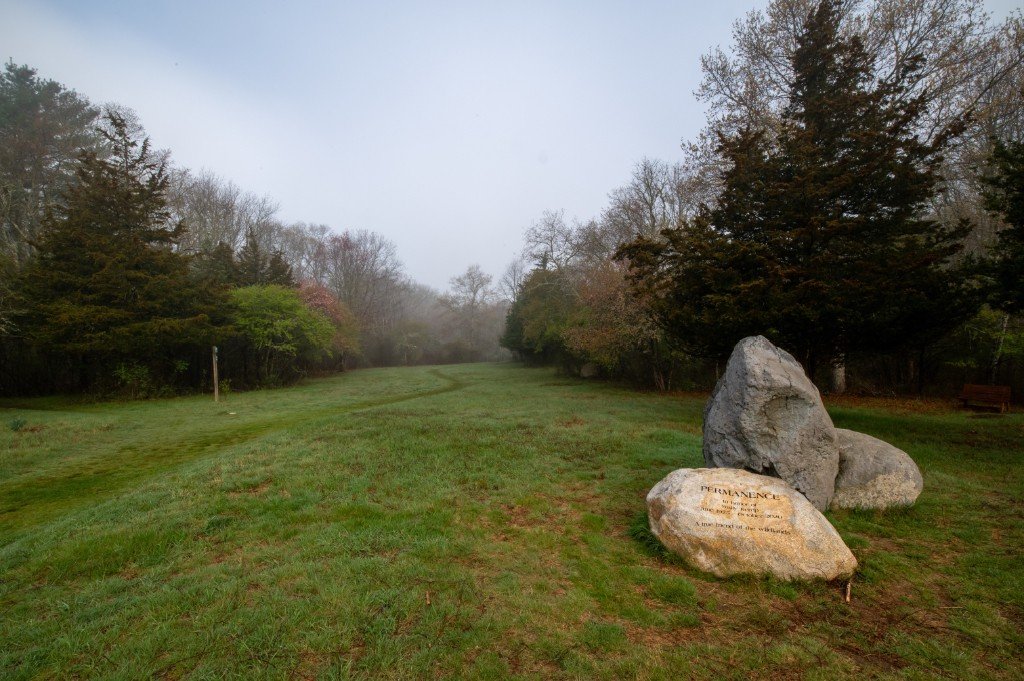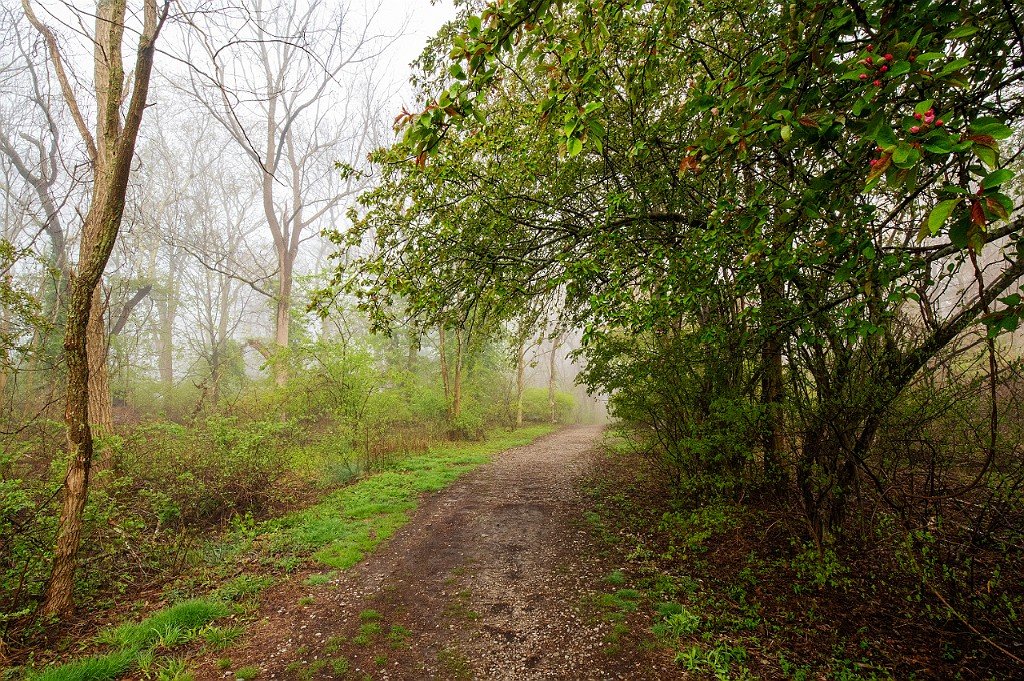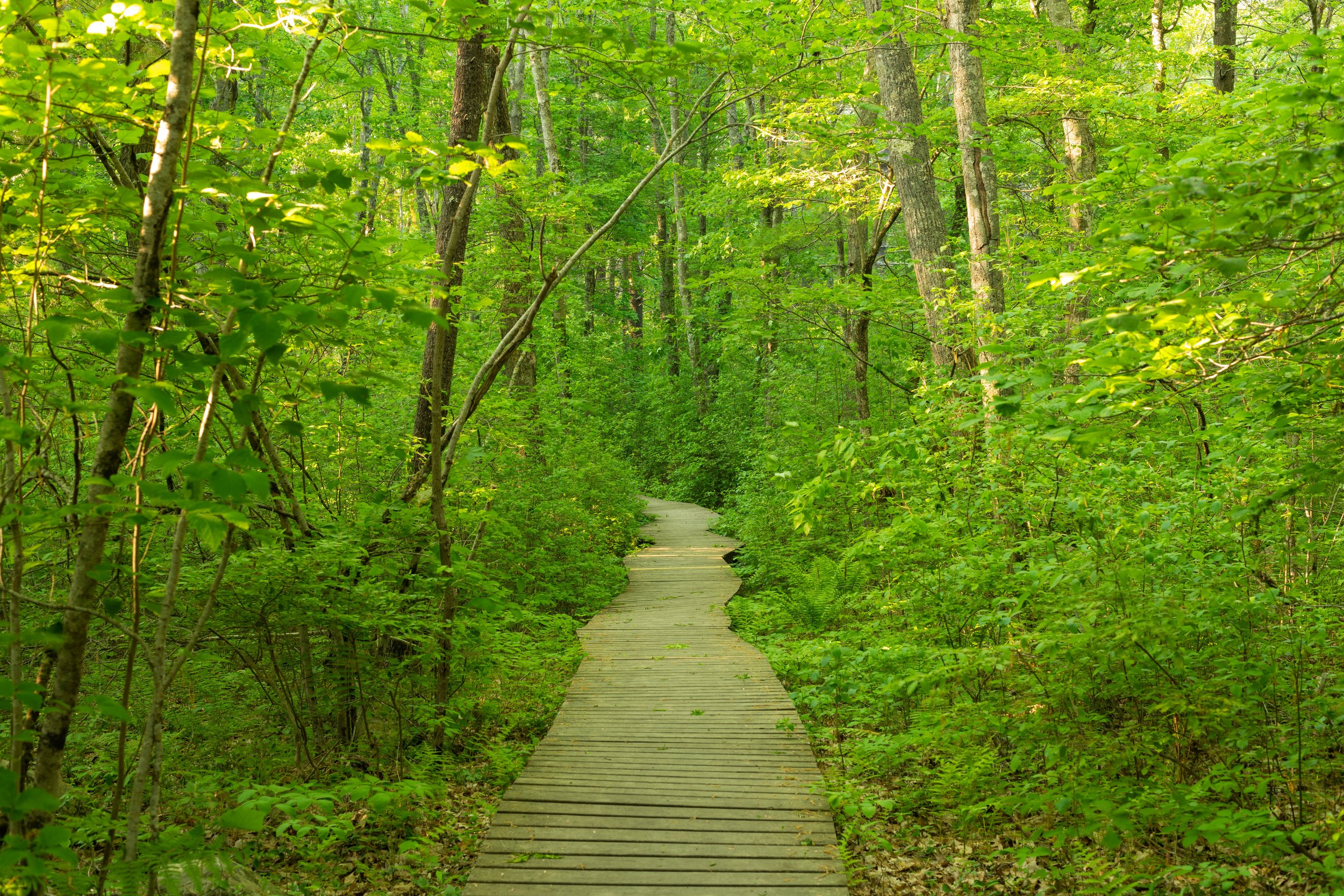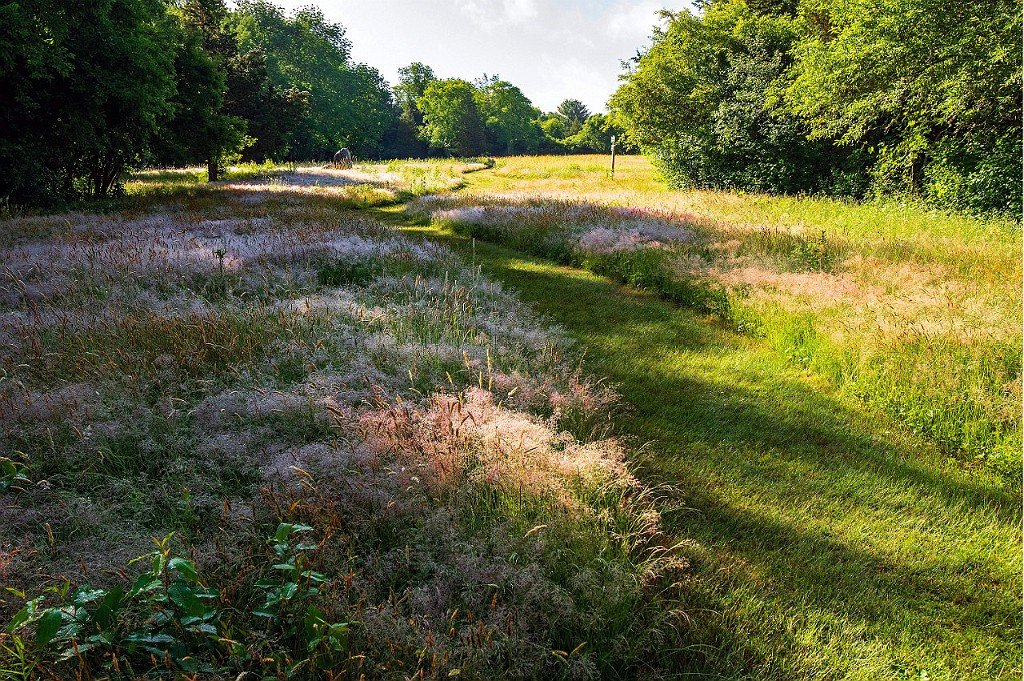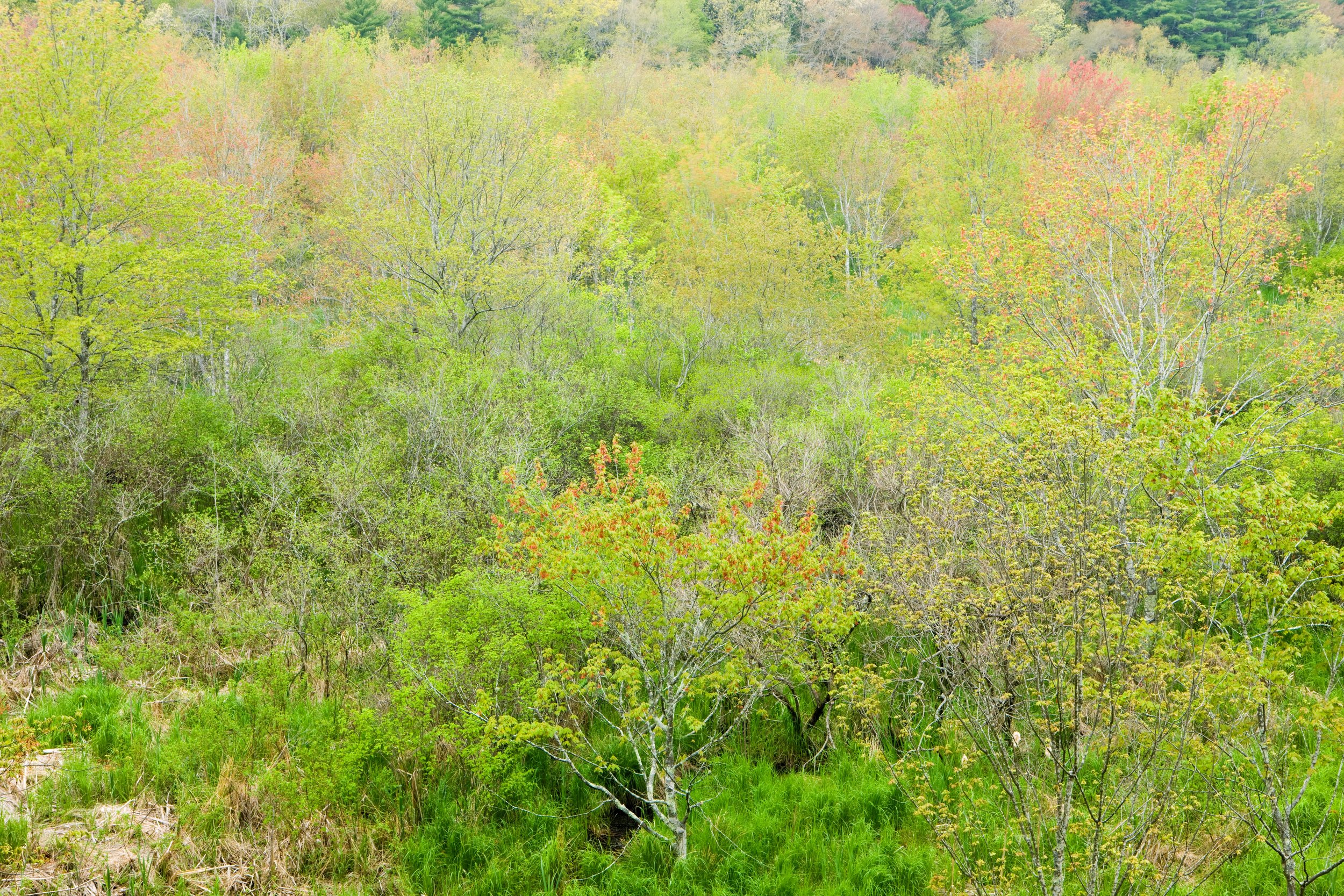Andrew and Ann Dee Pelley (left) met with Skip Stuck (right) to share historical photos and other documents connected to the Willow Brook Farm property.
By Skip Stuck, Key Volunteer
Over the last year, I have completed nine "human histories" of Wildlands Trust's preserves and the communities that surround them. With each one, I am reminded of the near-impossibility of creating a truly accurate and clear-cut account of past people and events. History is always "in the eye of the beholder." History from the perspective of Native Americans will often be at odds with that of colonists. Farmers, academics, industrialists, religious leaders, the wealthy, the poor, the young, and the old will view the same events in different ways, colored by their cultures, experiences, hopes, and biases. "Accurate" history is a laudable, yet usually unreachable, goal.
Pictures can bring us closer to that goal. While I've discovered many written narratives on local human history, pictures, paintings, maps, and illustrations have been much harder to find. That is why I was excited a few weeks ago when the Trust was contacted by Willow Brook Farm neighbors Ann Dee and Andrew Pelley, who wanted to share some historical photos of Wildlands’ Pembroke preserve. They saw the history that we published last April and its request for more information, especially pictures. After some intensive research at the Pembroke Historical Society, Ann Dee and Andrew visited us at our Plymouth headquarters, accompanied by some amazing pictures and documents.
Before you read further, I encourage you to revisit the original April 2024 entry of “Human History of Wildlands: Willow Brook Farm.” Click here.
Barker & Pleasant Street Houses
The Barker House was built sometime between 1783 and 1810 and burned down in 1915. Photo courtesy of the Pembroke Historical Society.
The Pleasant Street House was built in 1777 by Israel Turner. Photo courtesy of the Pembroke Historical Society.
In 1877, the Pleasant Street house was moved to Barker Street on the Willow Brook Farm property, where it remains today. It is said that it took a team of oxen six weeks to move the house. Photo from 1979, courtesy of the Pembroke Historical Society.
Above are two of the earliest dwellings on the property. The Barker house, owned by Benjamin Barker and his family, burned down in 1915.
The property continued in Barker and relatives’ hands until 1914, when it was purchased by William Hurley. Hurley established the Willow Brook Dairy Farm, which became renowned for the quality of its Guernsey cattle.
“1st prize Breeder’s Herd | Springfield, October, 1917.” Photo courtesy of the Pembroke Historical Society.
“IMP, Cherry’s Memento, No. 27562 | 1st Prize and Grand Champion, Brockton and Springfield | October, 1917.” Photo courtesy of the Pembroke Historical Society.
Until the early 1950s, the farm thrived, adding a large barn, milking station, and many acres of pasture.
William Hurley, owner of Hurley Shoe Company in Rockland, purchased the land in 1914. Thereafter, he built this dairy barn in the middle of the property. Photo courtesy of the Pembroke Historical Society.
Willow Brook Farm milking station. Photo courtesy of the Pembroke Historical Society.
Today, many reminders of that time remain, including the foundation of the milking station, numerous stone walls, falling fence posts, and open pastures, maintained as part of Wildlands Trust's commitment to preserving Willow Brook Farm’s agricultural history.
We want to thank Ann Dee and Andrew Pelley for providing us with a richer understanding of the human history of Willow Brook Farm through their pictures.
For others who have information of any kind that can help us refine our understanding of the human history of Wildlands, please contact Communications Coordinator Thomas Patti at tpatti@wildlandstrust.org or 774-343-5121 ext. 108. We may feature your insight in future “Human History” editions.
And finally, please visit our online property description and trail map of Willow Brook Farm and explore its trails in person.




















